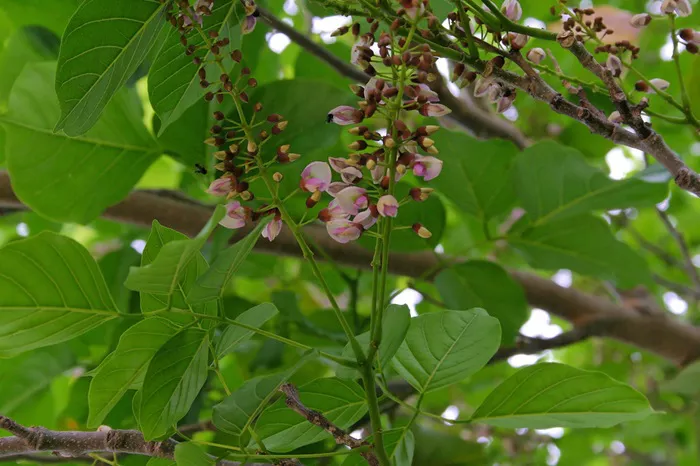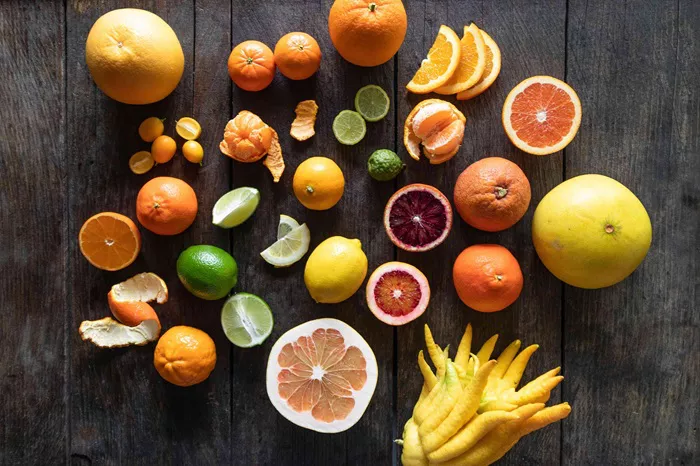An ancient tree from India is now thriving in the groves of Florida, where citrus trees once flourished. This tree, known as pongamia, could potentially provide the nation with renewable energy and plant-based proteins.
For decades, Florida’s citrus industry has struggled due to two fatal diseases: greening and citrus canker. These diseases have decimated large parts of the Sunshine State’s citrus crops. In response, some farmers are turning to pongamia, a climate-resilient tree with the potential to produce sustainable biofuel and plant-based proteins.
Historically, pongamia has been used as a shade tree. It produces legumes, little brown beans, that are so bitter even wild hogs avoid them. However, unlike orange and grapefruit trees, pongamia trees require minimal attention. They thrive without fertilizer or pesticides, flourish in both drought and rainy conditions, and don’t need teams of workers to pick the beans. When ready for harvest, a machine simply shakes the beans from the branches.
Terviva, a San Francisco-based company founded by Naveen Sikka in 2010, has developed a patented process to remove the biopesticides that cause the bitter taste of pongamia beans, making them suitable for food production.
“Florida offers a rare opportunity for both Terviva and former citrus farmers. The historical decline of the citrus industry has left farmers without a crop that can grow profitably on hundreds of thousands of acres, and there needs to be a very scalable replacement, very soon,” Sikka told The Associated Press. “Pongamia is the perfect fit.”
What is the Pongamia Tree?
Native to India, Southeast Asia, and Australia, the pongamia tree is a wild legume now being cultivated for several products. These include Panova culinary oil and protein, which are used in Aloha’s Kona protein bars, and protein flour. The legumes also produce oil that can be used as a biofuel, particularly for aviation, with a very low carbon footprint, according to Ron Edwards, chairman of Terviva’s board of directors and a long-time Florida citrus grower.
Transforming Pongamia into a Domestic Crop
Turning a wild tree into a domestic one hasn’t been easy. “There are no books to read on it, either, because no one else has ever done it,” Edwards said. Despite the challenges, pongamia supports local biodiversity by attracting bees and other pollinators. An acre of pongamia trees can potentially provide the same amount of oil as four acres of soybeans, Edwards added.
The residual high-grade protein from pongamia beans can be used as a substitute in baking, smoothies, and other plant-based protein products, offering significant potential for both the food and petroleum industries.
Why Florida?
Pongamia grows well in Florida, and the market demand for the oil and protein derived from its beans is enormous. Farmers can now reduce their costs and adopt sustainable farming practices. At a nursery near Fort Pierce, workers skilled in pongamia grafting techniques ensure the genetics and desired characteristics of the mother tree are perpetuated in all of Terviva’s trees.
Pongamia vs. Citrus
Citrus had been Florida’s premier crop until diseases like citrus canker and greening devastated the industry. Citrus canker, a bacterial disease, causes lesions on fruit, stems, and leaves, rendering trees unproductive. Citrus greening, also known as Huanglongbing, slowly kills trees and degrades fruit quality. This disease has reduced citrus production by 75% in Florida since 2005 and has spread to Louisiana, Texas, and California.
In contrast, pongamia trees are resilient to climate and disease. “It’s just tough, a jungle-tested tree,” Edwards said. Pongamia also grows well in Hawaii, thriving on land previously used for sugarcane.
Citrus Farmers’ Perspectives
John Olson, owner of Circle O Ranch near Fort Pierce, replaced his grapefruit groves with 215 acres of pongamia trees. “We went through all the ups and downs of citrus and eventually because of greening, abandoned citrus production,” Olson said. The cost of maintaining citrus trees became too risky due to disease management expenses.
Edwards highlighted the ecological benefits of pongamia: “What attracted me to pongamia was the fact that one it can repurpose fallow land that was citrus and is now lying dormant. From an ecological point of view, it’s very attractive because it can replace some of the oils and vegetable proteins that are now being generated by things like palm oil, which is environmentally a much more damaging crop.”
Biofuel Potential
In December 2023, Terviva signed an agreement with Mitsubishi Corporation to provide biofuel feedstock that can be converted into biodiesel, renewable diesel, and sustainable aviation fuel. “Our partnership with Mitsubishi is off to a great start,” Sikka said, noting that Mitsubishi’s expertise and leadership have accelerated Terviva’s progress.
Food Products from Pongamia
Research into pongamia’s potential continues, with promising results in producing graham crackers, table oil, flour, and protein bars. Pongamia offers an alternative to soybean and yellow pea protein, providing a plant-based protein option for those seeking non-meat sources.
In summary, the pongamia tree presents a promising solution for Florida’s struggling citrus industry, offering sustainable biofuel and plant-based proteins while supporting local biodiversity and reducing agricultural costs.
[inline_related_posts title=”You Might Be Interested In” title_align=”left” style=”list” number=”6″ align=”none” ids=”10669,10666,10663″ by=”categories” orderby=”rand” order=”DESC” hide_thumb=”no” thumb_right=”no” views=”no” date=”yes” grid_columns=”2″ post_type=”” tax=””]

































